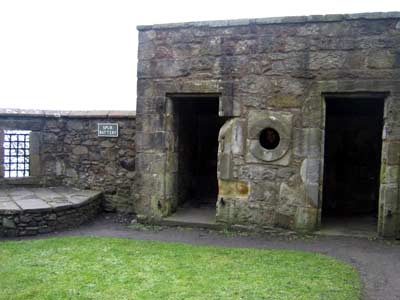 |
 |
| The new castle mentioned in the burgh's charter of 1222 stood on the western fringe of the country. At that time, much of the western seaboard, including the islands of Arran and Bute, were under the king of Norway's control. Dumbarton Castle was of major strategic importance. But after the defeat of the Norsemen at Largs in 1263 and the Treaty of Perth in 1266, which brought the lands in the west under Scottish control, the castle's importance as a frontier post declined.
|
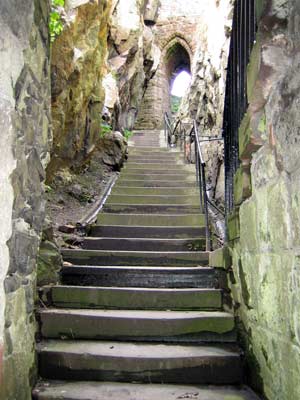 |
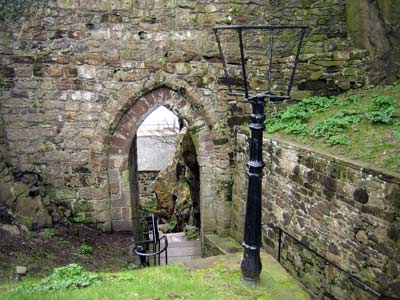 |
| Nothing remains of phase 1 of the life of Dumbarton Castle, the time of King Rhydderich Hael who features in Norse legends, that of the legendary Merlin who is also supposed to have stayed there, its capture by Northumbrians and Picts, and the siege by the Vikings "Ivar Beinlaus" and "Olaf the White". Little remains of the medieval phase of the fortress either, except for the Portcullis Arch (above) dating back to the 1300's, and the adjacent Guard House built in the 16th century. Dumbarton Castle gave refuge to King David II in 1333, was besieged twice by James IV in 1489 to quell a rebellion by Lord Darnley; captured in 1514 by the Earl of Lennox following the Battle of Flodden; garrisoned with French troops by the Duke of Albany in 1523; and in 1545, it was captured on behalf of Mary, Queen of Scots, who was brought to safety in 1548. She visited Dumbarton again 13 years later. |
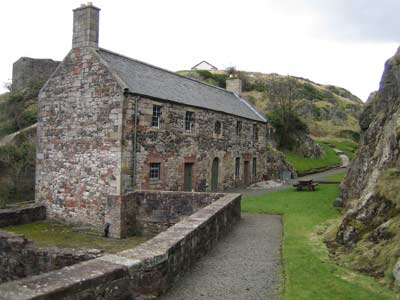 |
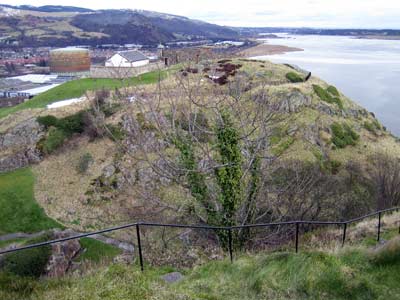 |
| The castle's importance declined after Cromwell's death in 1658, but the castle continued to be garrisoned until World War II. In 1790, the French Prison (above, left) was built to house prisoners from the French wars. Most of what you see today dates back to the 18th century, the medieval castle having all but vanished. Dumbarton rock has two peaks, one named "The Beak" (above right) and the other "White Crag". On The Beak is a Magazine built in 1748 (white house). You can also see its rooftop peaking above the French Prison on the photo on the left. |





